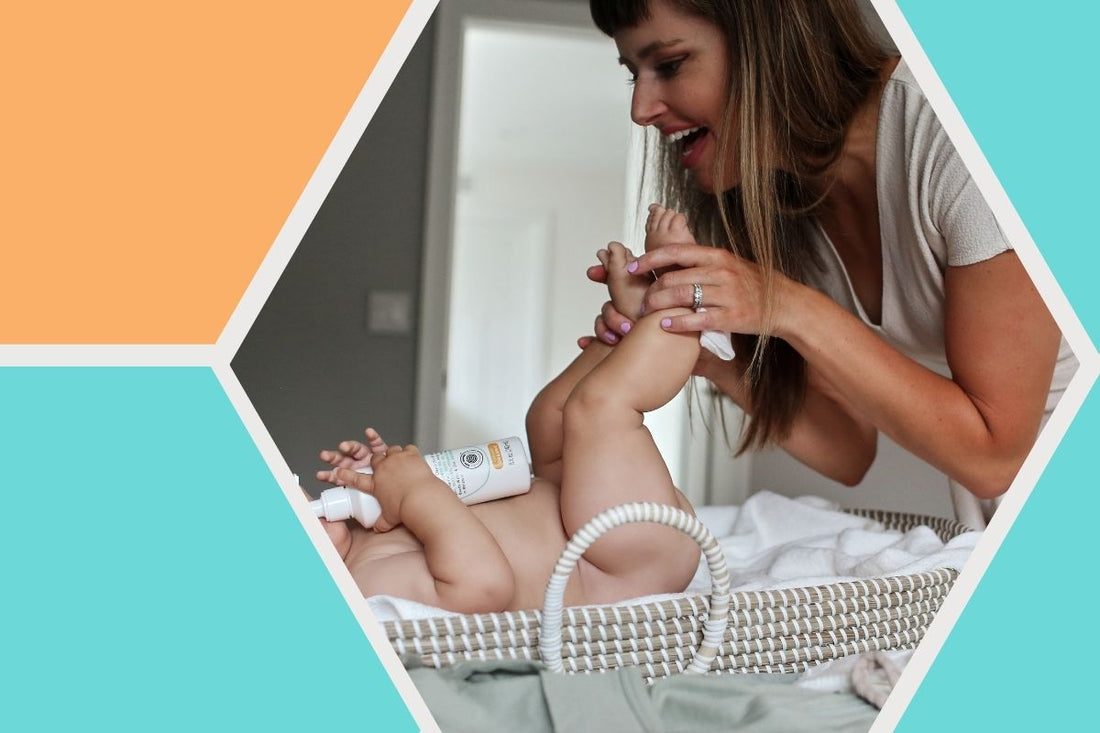
Which Rashes can be Mistaken for Diaper Rash?
Share
Diaper rash is one of the most common skin issues that babies experience. It usually develops due to the moist, warm environment in the diaper area and prolonged contact with urine and stool. In some cases, your child might develop a rash or patches of red skin that look like diaper rash, but are something else entirely. Understanding the signs and symptoms of rashes that are commonly mistaken for diaper rash can help you prepare to treat whatever your child is experiencing. Yeast infections, impetigo, and psoriasis can all present in ways that mimic the redness and irritation of diaper rash.
Yeast infection
Also called a fungal infection or Candida albicans, yeast infections can grow in the warm, moist folds of your child’s skin. Yeast infections typically present as swollen red skin combined with lesions and white scales. You may also notice small pus-filled bumps coupled with swollen red skin. Bumps may also appear outside of the immediate diaper area, like on the legs and stomach.
Although a yeast infection can cause diaper rash, they can also occur by themselves. Whether or not diaper rash is present as well, a yeast infection needs to be treated as soon as possible to prevent it from getting worse. If you observe symptoms of a yeast infection, the infection lasts for more than a week, or the infection reappears after healing, be sure to contact your child’s pediatrician. They will be able to prescribe the appropriate medication to properly heal your little one’s skin.
In the future, help prevent yeast infections by keeping your child’s diaper area as clean and dry as possible. Since Candida albicans flourishes in warm, moist climates, this will be your best method for avoiding issues down the road. Diaper rash also flourishes in this environment, so prevention of one rash helps you stave off other rashes from springing up.
Impetigo
If you notice pus-filled blisters or yellowish brownish crusty patches on your child’s skin, you may be dealing with impetigo. Impetigo is an infection that occurs when bacteria, most commonly Staphylococcus aureus or Streptococcus pyogenes, gets under your child’s skin. It can enter through broken or sensitive skin, including scrapes, cuts, and patches of eczema. The bacteria spreads easily, even through contact with objects that the infected skin has touched.
Symptoms of impetigo include fluid-filled blisters that break open and crust over. These blisters can pop up anywhere on the body, including in the diaper area. Since some wipes and other chemical-laden diaper care products can weaken the skin barrier in this area, this skin could be more susceptible to infection. Plus, impetigo thrives in warm, moist areas, making the diaper area a perfect breeding ground. Your child may also come down with a fever or develop swollen lymph nodes. Note that it could take up to 10 days for symptoms of impetigo to present in your child.
If you suspect that your child has impetigo, contact their pediatrician immediately. They can prescribe an antibiotic ointment to help kill the bacteria and heal their skin. Since the rash is contagious, keep your child from close contact with others and wash their sheets, towels, and clothes daily.
Psoriasis
Psoriasis is rare in infants and babies, but still possible. On the skin, psoriasis causes thick, red patches with silvery scales. In infants, these patches most commonly appear on the face, legs, elbows, scalp, and diaper area. Psoriasis is a chronic skin condition that does not have a clear cause. If you suspect your child’s red patches are psoriasis, a doctor can help you diagnose the condition. Common treatment options include keeping the affected area clean and dry, using topical creams and moisturizers, and avoiding triggers, such as hot or cold temperatures.
What should I do if I suspect something other than a diaper rash?
With all of the above skin conditions, pay attention to the specific symptoms and how long the rash persists. If a rash in the diaper area does not improve or worsens after 2-3 days, always contact your baby’s pediatrician to get a professional’s diagnosis and explore treatment options. Keep the affected area clean and dry with proper diaper care and frequent changes. Use a gentle, natural diaper care product like NOLEO 3-in-1 Cleanser and Moisturizer to prevent further irritation. As per the label’s instructions, don’t use NOLEO® on broken skin — instead, use water or petroleum jelly to cleanse and protect the skin. You can safely resume using NOLEO 3-in-1 once the skin has healed.
